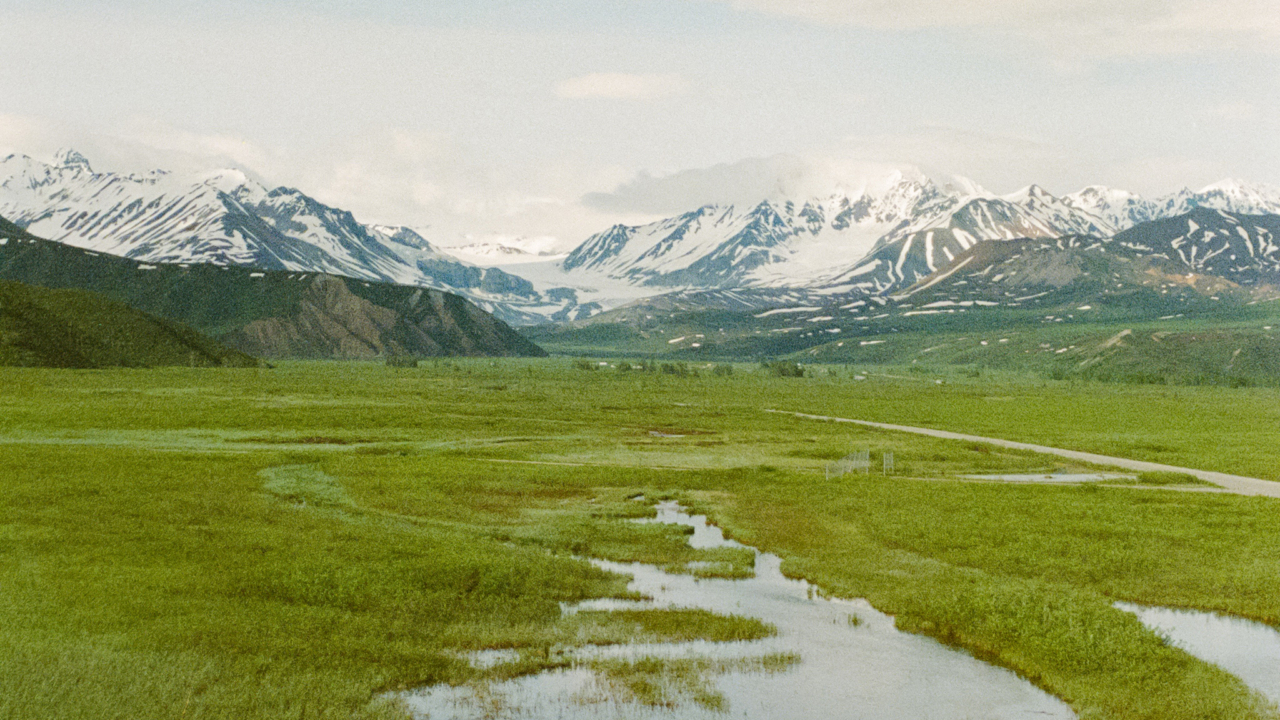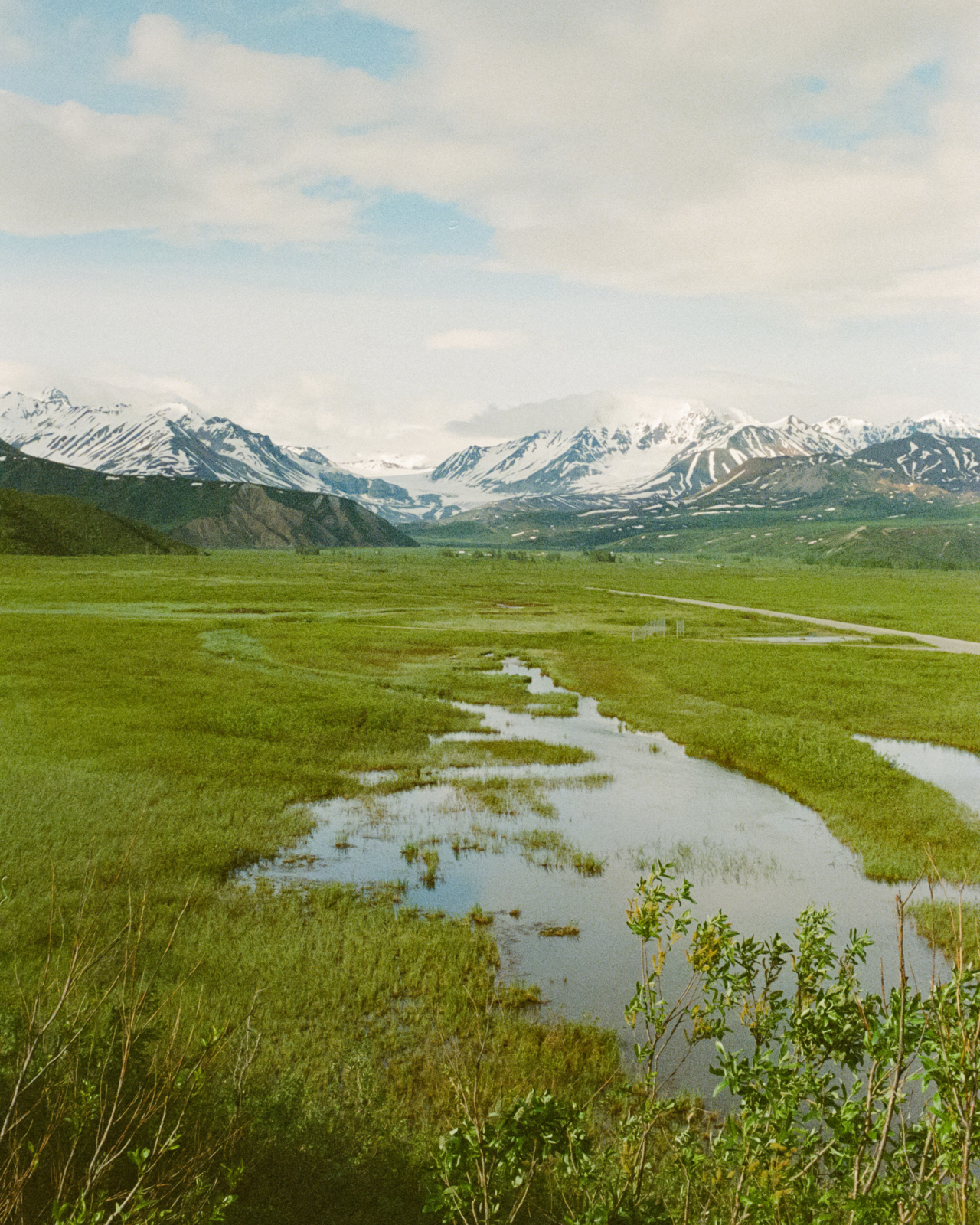

Photograph by Amanda Ferell / Somewhere x Kintzing
words by miranda green
Less than two weeks ago, a typhoon hit an Alaskan village so severely that many of its homes floated out to sea. Strong winds and flooding from the cyclone destroyed houses in at least 15 villages. Residents said the damage looked like a bomb had gone off. At least one person died.
The storm and the destruction it wrought are the results of a terrible confluence of events: climate change bringing more frequent and extreme weather; a government shutdown; and a National Weather Service that, decimated by DOGE cuts, had paused important weather balloon data collection. The communities that experienced the worst storm surges were not in the original forecasts, according to reports, and were woefully unprepared.
What Alaska faced was a perfect storm—but it has for years been living with the impacts of climate change.
A 2022 typhoon displaced 37 Alaskans from a 1,400-person town on the edge of the Bering Sea. “It did an entire lifetime’s worth of erosion in one storm,” Estelle Thomson, president of the Native Village of Paimiut Traditional Council, told PBS’ Frontline in April. Several towns in recent years have been entirely relocated away from areas that are sinking due to permafrost thaw and coastal erosion, costly endeavors with low success rates.
The Trump administration last week pledged to send $25 million in immediate storm relief to Alaska. The next day, it announced something else: Parts of Alaska would be reopened for new oil and gas drilling.
“We are strengthening energy independence, creating jobs, and supporting Alaska’s communities while driving economic growth across the state,” Interior Secretary Doug Burgum announced.
The timing couldn’t feel more insensitive. Kipnuk, an impacted village that lost 90% of its homes during the typhoon this month, had previously secured a $20 million Environmental Protection Agency grant to fight coastal erosion. The Trump administration canceled the grant in May, seemingly unconcerned about the high potential for future deadly storms that might exacerbate the issue along the coast.
A day after the typhoon hit, as locals were still trying to ascertain the extent of damage, Trump declared October “National Energy Dominance Month.” The proclamation recommitted the U.S. to “harnessing the liquid gold and minerals under our feet and bountiful resources in our waters, forests, and fields, achieving American energy dominance, and forging a future defined by three simple words: ‘Drill, baby, drill.’”
Now, 1.56 million acres of a coastal region in Alaska’s Arctic National Wildlife Refuge are back on the table for fossil fuel extraction—the very fuel that, when burned, is largely responsible for the community’s coastal erosion and worsening disasters.
Republicans, along with Alaskan officials and some residents and Iñupiat communities, have long lobbied for or supported oil and gas exploration in the refuge since it was established in 1960. It’s a nearly untouched plot of land the size of North Carolina that’s home to polar bears, wolves, and caribou.
Members of Congress failed twice to pass legislation to open ANWR to drilling under presidents Bill Clinton and George W. Bush. But Trump was successful during his first term: He included oil and gas drilling language in his $1.5 trillion tax bill. By the end of 2020, 1.5 million acres of the Arctic refuge’s coastal plain were open to drilling for the first time.
It didn’t last long, though. President Joe Biden, on his first day in office in January 2021, issued an executive order putting a moratorium on new drilling. He eventually canceled the remaining seven Trump-era leases for oil and gas drilling.
Trump’s announcement will now reverse that—and there’s no questioning his motives. His One Big Beautiful Bill Act, passed in July, mandated four 400,000-acre lease sales in the ANWR by the next decade. The announcement will likely curry favor with a number of the oil and gas industry mega donors who gave to the Trump campaign, as well as with his agency secretaries, who have close working ties to the fossil fuel industry.
Environmentalists have long argued that drilling in the region would be devastating to animals and Indigenous locals, as well as a major climate concern. And it’s not the only area in Alaska that the administration has its eyes on.
In August, the Forest Service announced it’s moving forward with plans to reverse another rule that limited logging and development in the Tongass National Forest, home to some of the country’s oldest trees. They are also huge carbon stores. The forest holds roughly 9.9 billion tons of CO2—nearly twice the country’s annual fossil fuel emissions.
If you want to read more about the 180-foot-tall, 500-year-old trees at risk of being sold for $17,000, this intimate Washington Post article by Juliet Eilperin still awes me.
As you can imagine, any development in the Arctic—whether logging, or drilling for oil or gas—is extremely difficult to do, which also makes it extremely expensive.
The cost of extraction in these remote, unforgiving terrains is often not worth the benefits of the Earth’s bounty. When Trump first opened up ANWR to oil and gas drilling in 2021, for example, only nine tracts—or 437,804 acres of the 1.6 million available acres—sold, for a total of $14.4 million in winning bids. The Trump administration had previously estimated the sales would generate $1.8 billion. A second lease sale in January 2025 generated no bids.
The price of crude oil and gas has also dropped significantly—something Trump is taking credit for. While that’s great for consumers, it’s bad for producers who will get less money for their efforts, likely making oil extraction in the Arctic less appealing.
That means the story here isn’t over yet. Despite the Trump administration’s doubling down on fossil fuels, basic economics reveal the folly of betting on dirty energy. Markets and people are increasingly championing cleaner energy sources, which are also becoming more economical.
Alaska Towns Are Sinking. Trump Wants to Increase Drilling